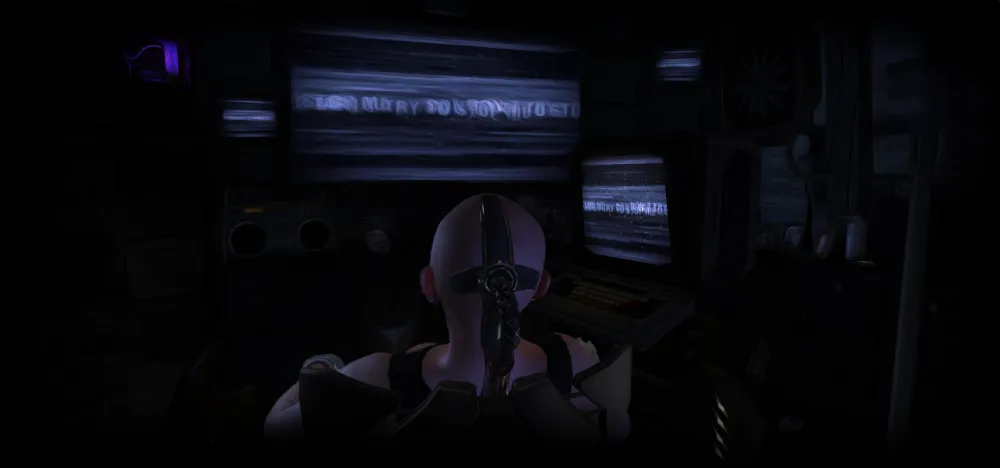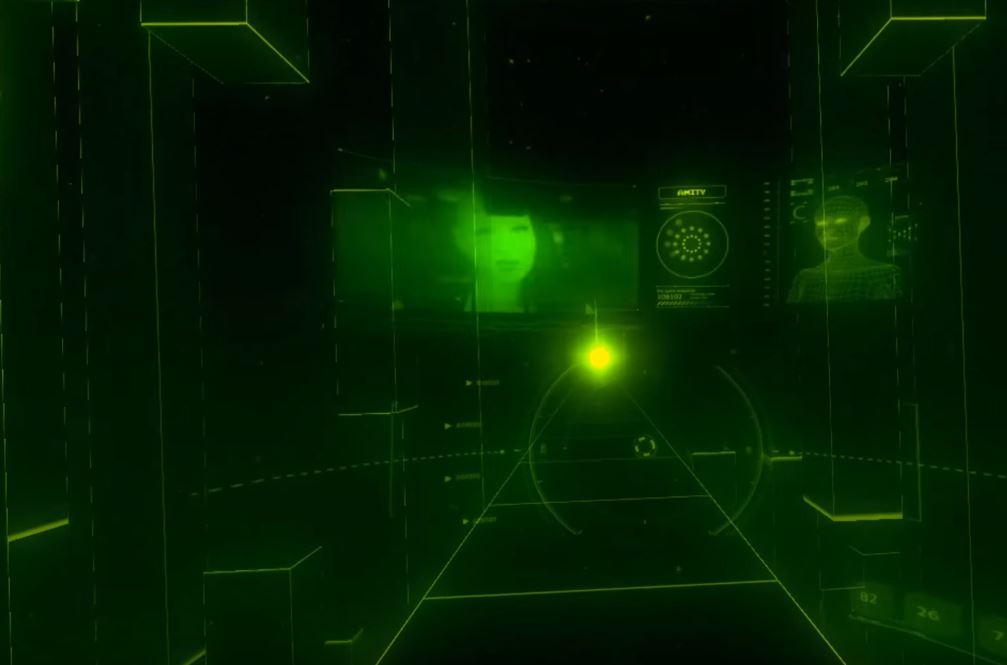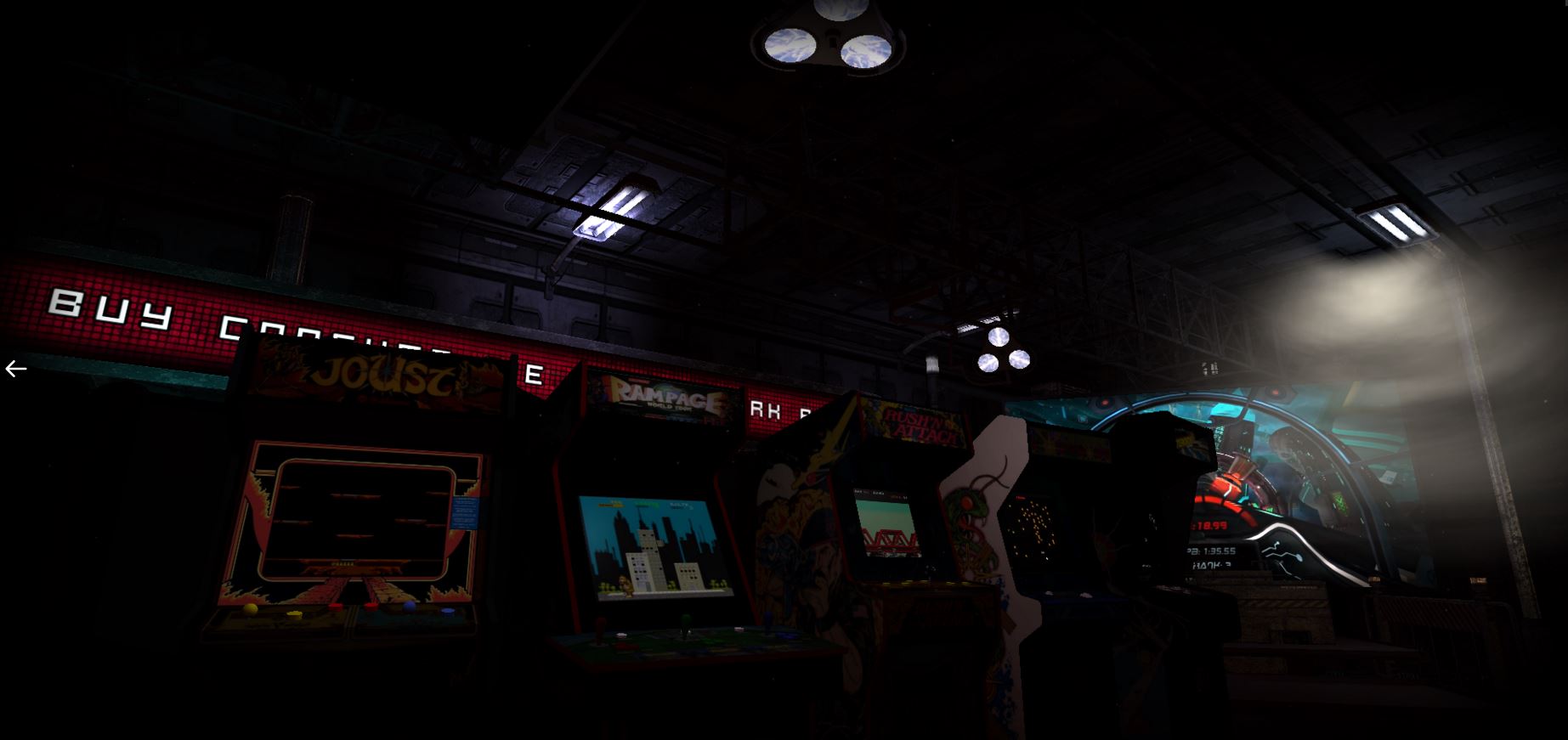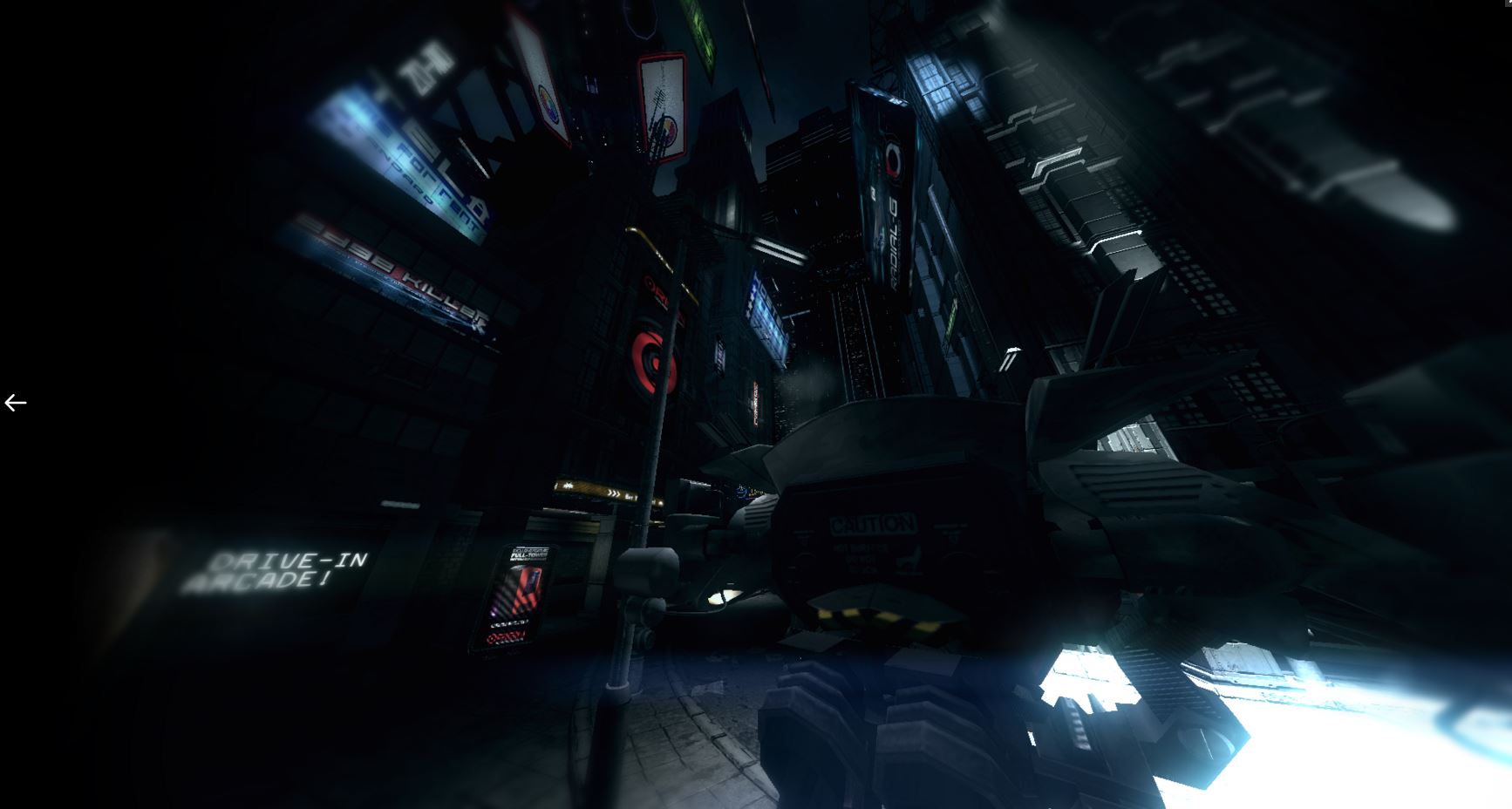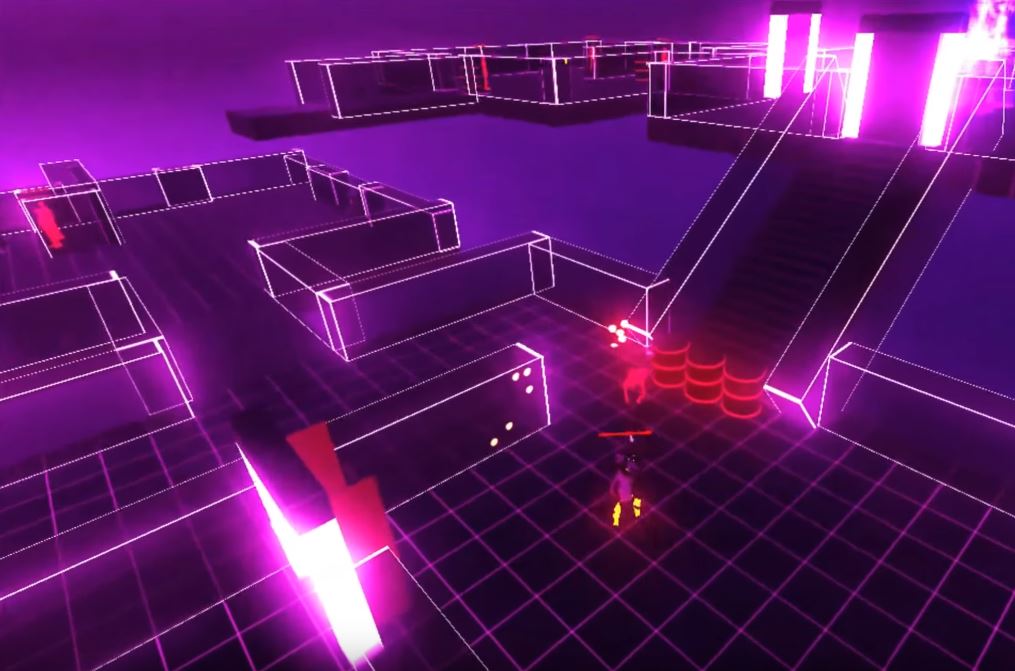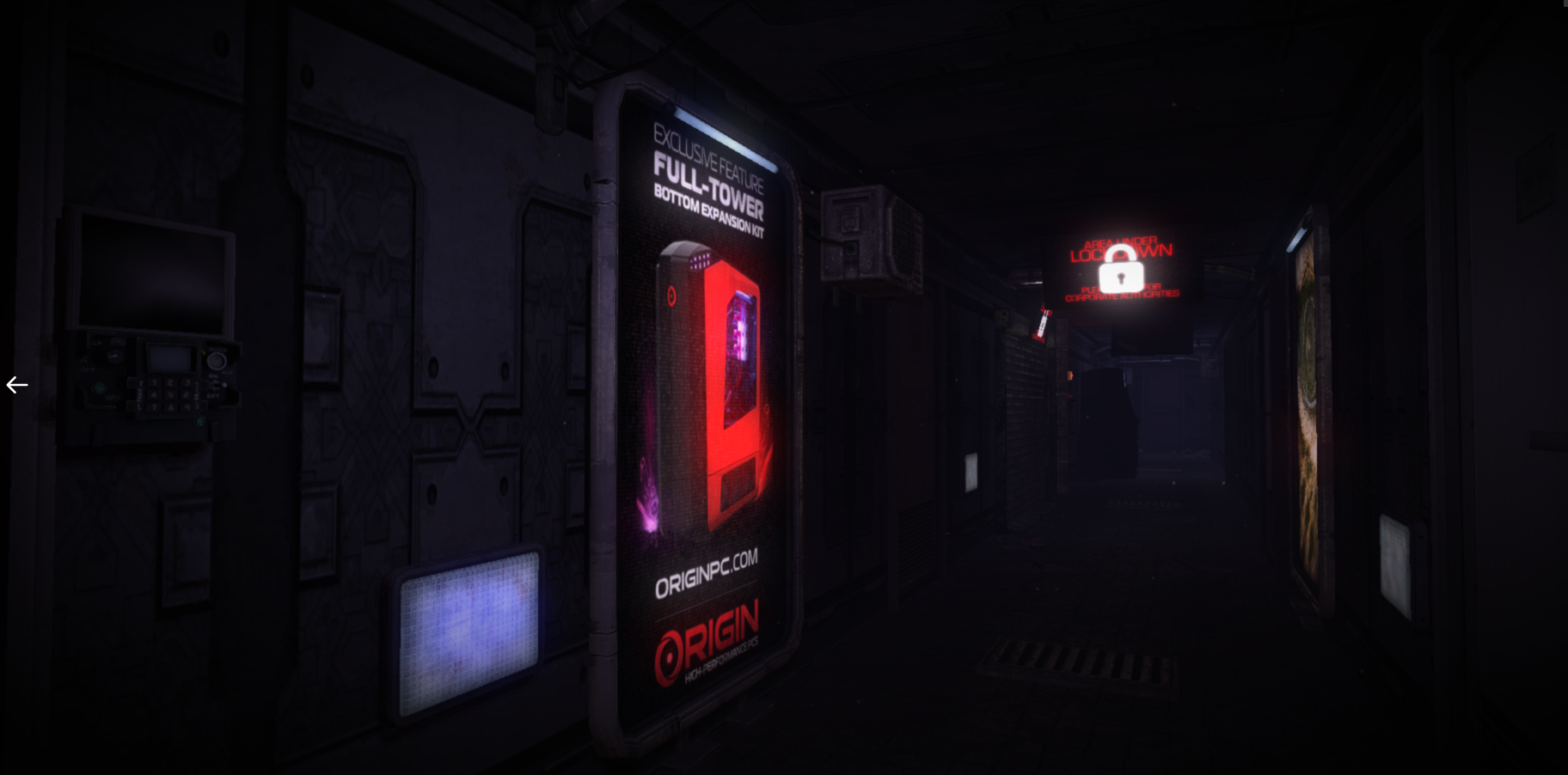Studio: IRIS VR
Platform: Oculus Rift
Price: Tentatively $24.99
Release Date: Approximately Mid-April
If you mixed together ingredients from Cyberpunk 2020, a tabletop RPG, with elements from Blade Runner, The Matrix, and Shadowrun’s dystopian future, you’ve got a pretty solid foundation for what makes up Technolust, a futuristic cyberpunk adventure exploration game exclusive to the Oculus Rift. That isn’t to say it’s creativity is absent, but rather, the fact that a small-scale Kickstarter-funded adventure game for VR possesses even flashes of remnants of these juggernauts of sci-fi pop culture should be commended and noted.
Things start out simply enough. You begin by entering what feels, quite literally, like something straight out of The Matrix. As is customary with most sci-fi, when you’re hacking something or entering any type of computer program, the world around you changes to visualize this new medium. One of the main differences with Technolust though is that, in some cases, you actually do enter the programs via “jacking in” rather than just sitting at the computer.
Nearly every part of my environment could be touched and manipulated.
You’re thrust into this world of cyber-espionage to de-encrypt and decipher a mysterious file by the name of GENE.SYS. It’s dangerous and highly sought after, so what begins as a mere mystery game quickly evolves into a space-trekking adventure across city undergrounds and, at one point, even to Mars.
Staying true to the old-school adventure games that inspired it, Technolust doesn’t complicate itself unnecessarily with any shoehorned elements at all. You won’t have to worry about clunky combat or pointless dialogue trees. There’s no inventory to manage or any real control inputs other than moving and interacting. But what Technolust lacks in complexity of game mechanics it more than makes up for in the intricacy of its world design.
What struck me the most is this overwhelming sense that this was a living, breathing world.
Nearly every part of my environment could be touched and manipulated from the toaster in my apartment to the boom box in the streets. People and androids are scattered throughout the game willing to talk with me and, in many cases, often valuable insight. What struck me the most is this overwhelming sense that this was a living, breathing world that I just so happened to exist in, rather than it being a sandbox for me to manipulate.
There’s no minimap or waypoint system. Characters speak to you like you’re an intelligent person and give you directions based on landmarks. IRIS VR clearly treated this as if it were a real place and it truly shows.
If Technolust weren’t in VR, it wouldn’t be anywhere near as engaging.
One great example of this is the integration of several real objects and elements to further enhance the sense of realism. Radial-G, another VR game you can download and play from the Oculus Store on Rift, is advertised on billboards and seen in arcades. You’ll see ads for Origin PCs and even find Oculus Rift DK2 headsets and old game systems scattered around the world. In the world of Technolust, we see a glimpse into the future of what would happen with a world overrun by the power and possibilities of virtual reality and it doesn’t mince any words.
Some of the ads can feel a little product-placementy and it would have been nice to see a bigger variety of them, rather than the same handful over and over, but it’s not overly intrusive. And luckily, Quinn’s Arcade in the downtown area of the early game is full of entirely playable arcade games. There are stealth-based action shooters, reflex and timing based endless racing games, and even cryptic subliminal message video machines. Like everything else, each moving piece of the overall puzzle fits in perfectly to create a believable world unlike anything else available in VR at the moment.
Technolust is a rare treat that feels like something we’d normally have to wait a year or more to ever receive on a new platform.
And if Technolust weren’t in VR, it wouldn’t be anywhere near as engaging. The entire world and game itself is built around the premise of you physically being in VR and living in a world that’s dominated by VR. Just as The Matrix worked so well for its setting by tying everything together, VR is the thread that runs through all aspects of Technolust. The physical mechanics of being able to move and exist in the world are just as important to the game’s success as the characters themselves. Technolust is one of the first examples that will prove VR is a unique medium for storytelling in video games.
Once you reach the end of the game however, some of the illusion starts to fall away as it reveals itself as the game it truly is. Without spoiling anything, in order to see the full ending, you’ll have to do a lot of backtracking for what ultimately feels like a big scavenger hunt. In a couple other spots it was often difficult to figure out where to go or who to talk to next. In order to maintain the immersion in the world, it makes sense to rid of all things UI-focused, but a datapad of some sort with the most recent clue or instruction would have been useful.
Despite the minor flaws, Technolust is self aware without being patronizing and immersive without feeling heavy-handed. In most cases, it’s a rare treat that feels like something we’d normally have to wait a year or more to ever receive on a new platform. While the ending left me hungry for more and some elements were obscure or annoying at times, that’s mostly a testament to how immersive and engaging the world was than it is a critique of the brevity or content. I can’t wait to see what’s next for this world and I hope to jack in again sometime soon.

